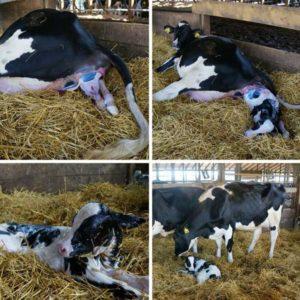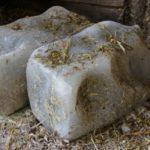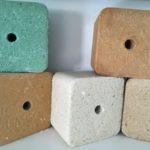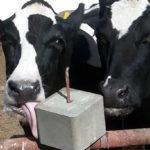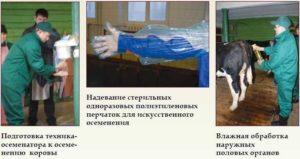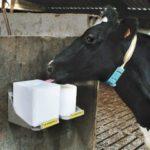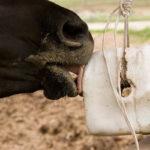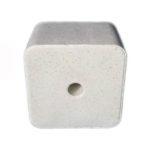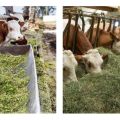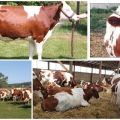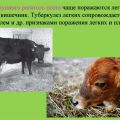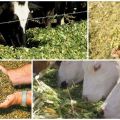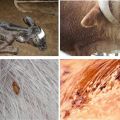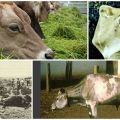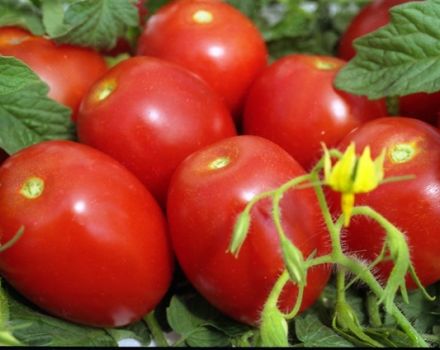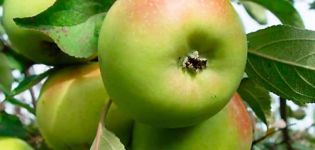Daily intake of table salt for cattle, what is it for?
Salt is an essential feed additive, a sufficient amount of which in the body ensures the normal functioning of all systems. To meet the needs of cows and calves for this food, it is better to use a lick. Cattle themselves know the rate of daily consumption of table salt, so they will not be able to exceed the norm. An excess of mineral supplements in the diet leads to intoxication of the body.
What is salt for?
An animal demonstrates high performance indicators if the diet includes vitamin and mineral supplements that are involved in all vital processes in the body. Saturation of cattle with sodium chloride is of great importance.
The salt contains:
- chlorine is necessary for the synthesis of hydrochloric acid and other substances responsible for the breakdown of fats in the stomach, regulates the water balance;
- the sodium-potassium compound is responsible for the penetration of glucose and amino acids through the cell membrane.
In addition, due to its antibacterial properties, sodium chloride protects against the negative effects of external factors, infections and diseases caused by pathogenic microorganisms. By improving the palatability of food, it increases appetite.
The lack of salt affects the functioning of the genitourinary system of animals, a decrease in appetite. During the period of intensive growth of calves, pregnancy and lactation, in winter, the body of cattle especially needs NaCl. Already from 5 days of age, you can give young animals with milk up to 5 g per day.
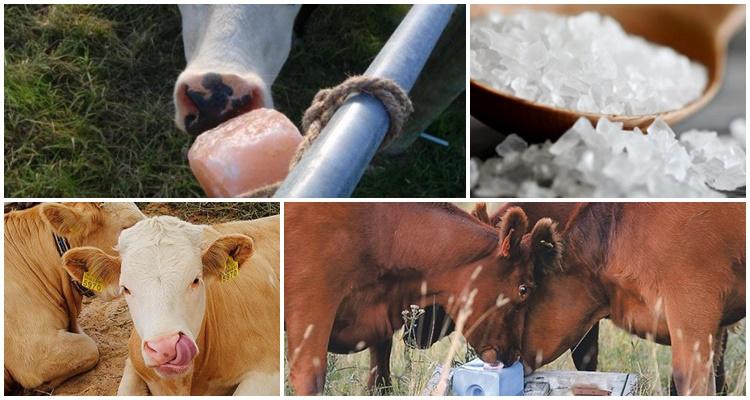
Very often there is a shortage of this trace element in the animal's body. Signs of a nutritional supplement deficiency:
- Cattle is more often sick, the coat is tousled, the skin is rough;
- the growth of young animals is markedly reduced;
- the animal has a downcast, sullen appearance, eats almost nothing;
- dull look;
- infertility, the cow rarely comes to hunt, irregularly;
- the productivity of cows decreases (the fat content and milk volume are falling).
The focus on meeting the needs of cattle in NaCl should be during the period of grazing, when most of the animal's diet consists of plant feed. At the same time, the daily dose of the dietary supplement must be strictly calculated.
Types of licks
A salt cake is not just a food product. It is a vitamin supplement consisting of mineral components and salt specially purified from impurities.
Types of licks:
| Brine block type | Characteristic |
| Premium | It is made from salt mined in Siberian mines. There are several stages of cleaning. Designed for the most demanding breeders. |
| With micro-, macroelements | The product contains elements and vitamins necessary for the normal functioning of the body. |
| Without MEL | Pure version of lick salt for daily replenishment of NaCl in the body. |
All blocks have holes in the center for a rope or holder. It is so convenient to hang the product at the location of the animal.
Consumption rates
The diet of cattle should include a sufficient amount of salt, which will saturate the animal's body with sodium. The safest way to provide your cows with NaCl is to use a lick. Calculation of the amount of salt per 1 individual per year: cattle - 11 kg, dairy cow - 26 kg.
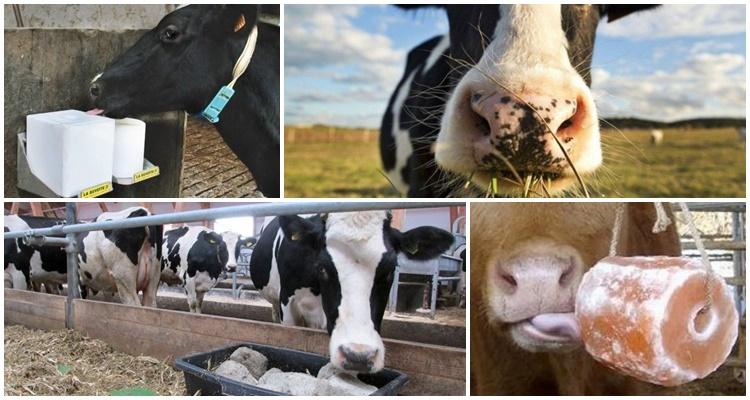
During pregnancy
During pregnancy, the female's need for salt increases. Therefore, the cows are given NaCl in several ways: add it to food, hang salt blocks in the public domain. If the female has not received the required amount of food additive with food, she can always go to the lick.
The minimum intake of sodium chloride per day is 30 g.
Lactation period
In the body of a recently calved cow, the salt supply is only enough for 6-7 weeks. Then the fat content of milk and daily milk yield directly depend on the intake of sodium in the body. NaCl influences the formation of milk fat. The daily intake is calculated according to the body weight of the animal and the milk yield. For every 100 kg, 5 g of sodium chloride is taken, plus for every liter of milk another 4 g. For example, a cow weighs 500 kg, she gives 20 liters of milk every day:
5 * 5 + 20 * 4 = 105 g / day.
Cattle love chaff, straw and other roughage moistened with a solution of sodium chloride. It is also necessary to provide the cow with free access to the lick briquette. The animal usually does not eat more than the body needs.
Highly productive
For highly productive cows and bulls, vitamin complexes with a low and medium content of table salt are used. When they lick the briquette, the body additionally receives the necessary microelements for the health of joints, bones and hooves, for proper metabolism, and maintaining the coordinated work of all organs and systems.
Therefore, the owner with feed must make up for the lack of food additives, at the rate of 55-60 g of sodium per day.
Signs of cow poisoning with table salt
Excessive consumption of table salt by cattle is fraught with serious poisoning. A large amount of food additives leads to inflammatory processes in the intestines, abnormalities in the composition of the blood, oxygen starvation, and disturbances in the functioning of the body. Also, an excess of sodium ions causes nervous overexcitation of the animal. Symptoms that indicate cattle intoxication with salt:
- the cattle looks weak, there is a tremor in the muscles;
- there is a sharp loss of appetite;
- mucous membranes and skin acquire a bluish tint;
- the animal is in a state of nervous overexcitation;
- shortness of breath is observed, vomiting is possible;
- pupils become dilated;
- diarrhea;
- the animal is constantly thirsty.
A dose of 3-6 g of salt per 1 kg of animal body weight is fatal for a cow. If she is not provided with timely qualified assistance, she will die of suffocation.
